Airstream's New Trailer Has a Full Office That Doubles as More Sleeping Space
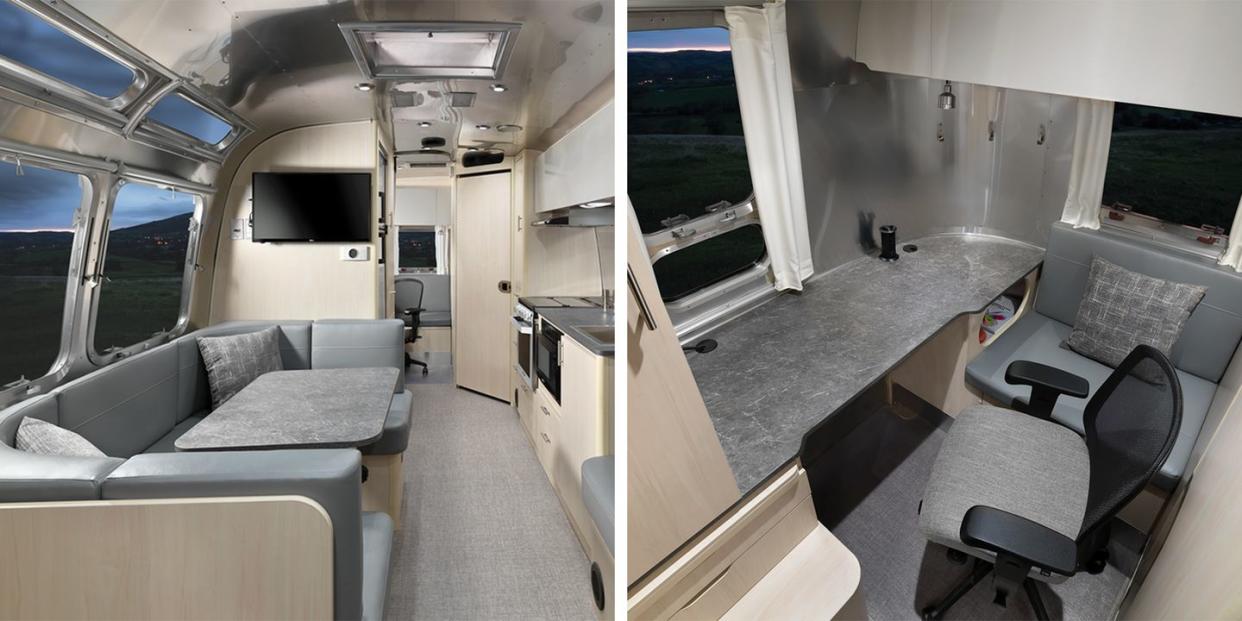
Airstream released the first of its line of Flying Cloud campers in 1949. Back then, the general idea was that these space-aged, aluminum-skinned cabins were the perfect means to transport a baby boomer family into the great outdoors and allow dad to escape the rat race. But times have changed. Now, due to COVID-19, families are fleeing city homes and abandoning airplane travel for the great American RV walkabout. Kids are in school virtually. Mom’s as likely to be earning the family keep via a laptop as dad. Campgrounds are doing record business, and normally empty Bureau of Land Management pull-off areas are now chock full of spendy camper vans and pull-behind RVs. Up until now though, what’s been generally lacking has been a dedicated space to get serious remote work done. That changed this week when Airstream announced the release of its new 30FB Flying Cloud model. Replete with a thoughtfully equipped “corner office,” this luxury, mid-length travel trailer should hold serious appeal to families and couples who need to bring the rat race along for the ride—and can afford to spend $107,500 for the privilege.
When I saw the announcement of this trailer, I was intrigued. This past September, my wife and I loaded up our two kids (ages 15 and 11), masks, sanitizer, bikes, and surfboards and latched our 19-foot Shasta Airflyte Reissue camper to the back of our Ford passenger Transit van. Aiming west from our home in Folly Beach, South Carolina, we joined millions of American families fortunate enough to manage to work and school remotely. We’ve long camped in our VW Westfalia pop-top, but with no particular return date, we anticipated a far greater need for room, privacy, and a separate space for school and work. With the Shasta as home base, we added a bed, porta-potty, table, and 120-volt inverter to the Transit to create a remote workspace. The simple setup proved occasionally annoying (forget the coffee and propane stove when you wake up early to work out of the Transit, and you’re inviting misery) but fairly workable. This new Airstream, however, looks to be a more seamlessly integrated solution—one that puts a new perspective on the term “home office.”
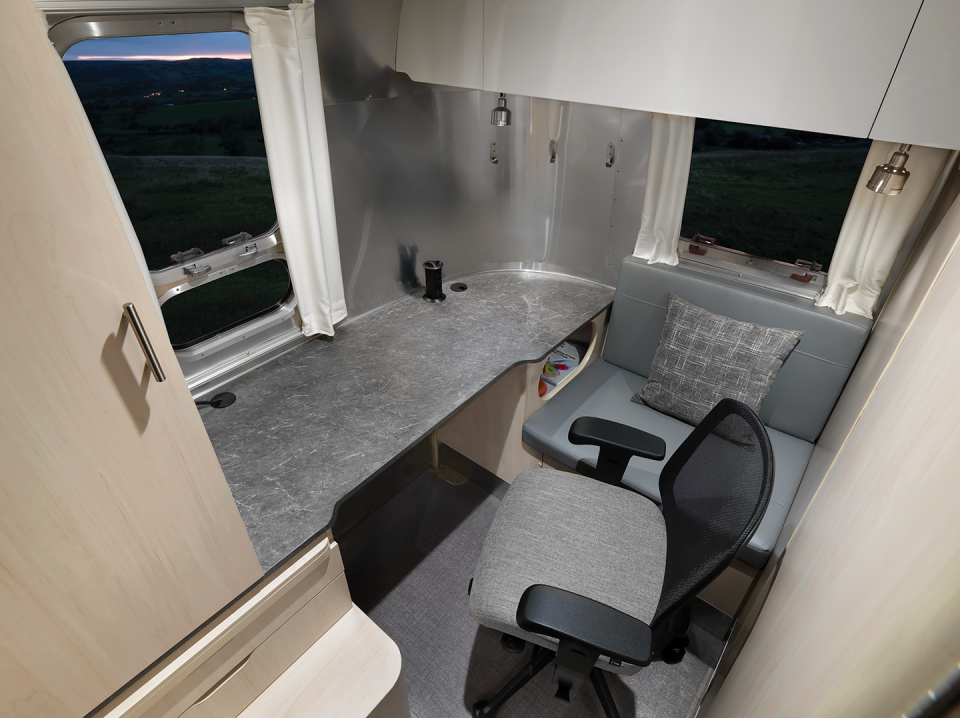
First and foremost, the 30FB is clearly a well-sorted family camper, with quiet, ducted climate control, a full galley, and the ability to sleep six—two in the front master bedroom, three in the center “living room,” and one on the rear office bunk. Having the small office set opposite the master bedroom (and next to the full bathroom) makes sense. Should one family member need to work late, or early, they can do so—even bedding down in the office —without disturbing the front occupants. Airstream added a sound-deadening divider and light-blocking curtains for the expansive windows, which should prove helpful during video conference calls. To ensure those calls stay online, their Airstream Connected option comes with a hotspot and a roof-mounted Wi-Fi booster antenna for campsites, while HDMI ports link to the larger TV. The office area also includes actual filing cabinets with dry-erase marker coatings, multiple USB ports, and a stow-able office chair.
To get a little more into Airstream’s thinking, I reached out to company spokesman Matt Rindone. He said the company picked the brains of many long-haul campers in designing the 30FB. “We learned a lot throughout the pandemic—not only about the necessity of connectivity and increased power options, but about the desire for comfort, flexibility, and privacy,” he said. “Many travel trailer owners were spending long hours working remotely from the road, and we saw an uptick in the need for a dedicated solution. Our main goal was to create a floor plan that gives owners the ability to bring the whole family along for the adventure, and still have the room and tools to work off-grid longer.”
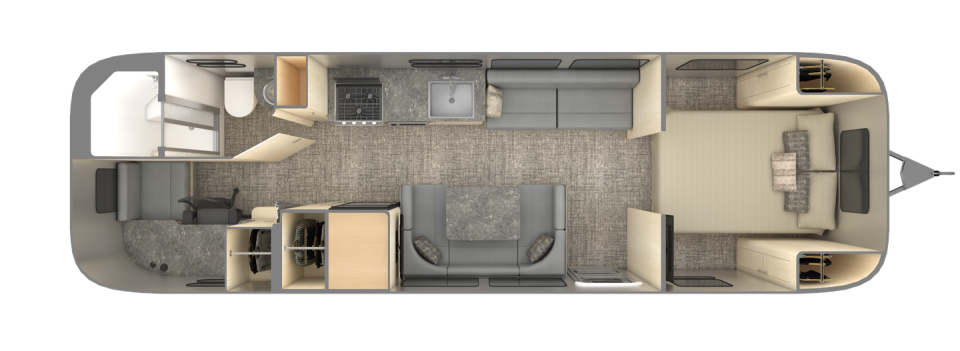
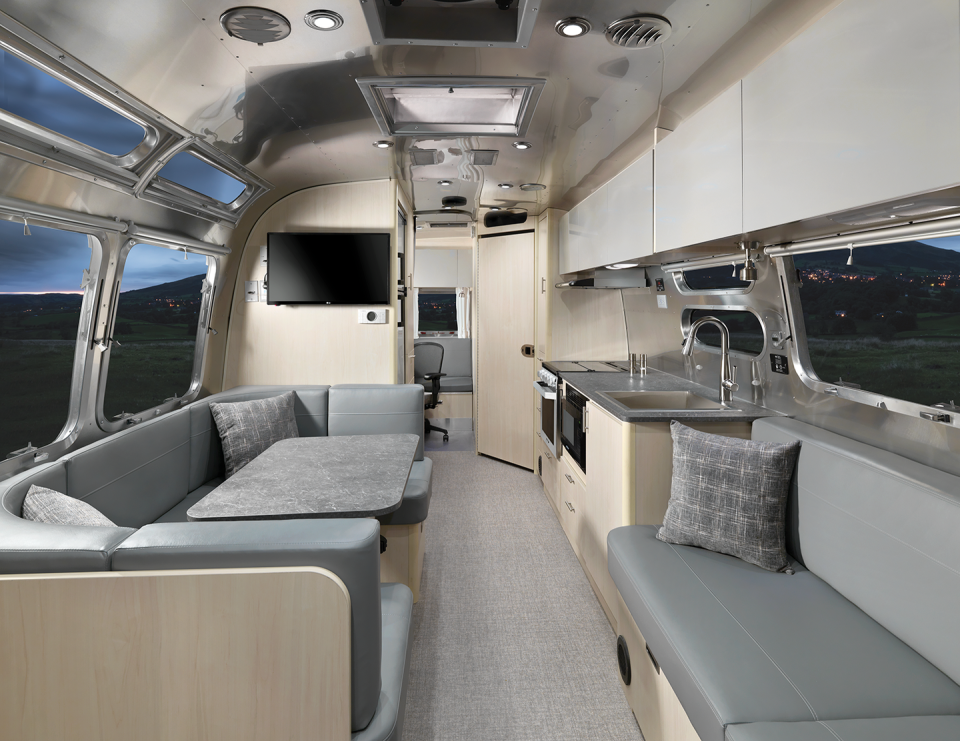
To that end, he added, Airstream offers a variety of power generating options, from multiple rooftop solar panels to high efficiency lithium batteries that can feed power to the camper’s 1,000-watt pure sine wave inverter (the device you use to run your computers and other 120-volt appliances.)
With this rig, I could easily envision a setup at a Lake Tahoe campground. I’m out for a paddle. The kids are posted up at the middle galley table doing schoolwork. My wife, a teacher, is conducting a virtual Zoom in the office with her class.
I’m not a fulltime RVer. But curious as to the take of a full-timer on this Airstream, I hit up James Adinaro, the prolific and popular video blogger with TheFitRV. Alongside his wife and co-host, Stefany, Adinaro has tested all manner of rigs over the past several years. He’s currently trekking and working out of a Winnebago Travato, and immediately hit on a major annoyance we’ve had with our Shasta trailer—one that the 30FB addresses. “Most manufacturers would have included some kind of convertible space, but Airstream just went ‘full office,’” he told me. “I work from the road, but I have to convert the dinette in our Travato into my office during the day. It would be just heavenly to have a literal dedicated office, especially one with that styling Airstream is known for.”
I’d have to agree. But with a few caveats of my own. First off, this, like all Airstreams, is expensive. We bought our Ford Certified Transit and barely used Shasta for $67,500 less than this rig alone. Our dedicated van work/sleep space coupled with the Shasta actually gives us two isolated rooms for a fraction of the price. Unless you’re working as a high-dollar, remote-capable programmer, and you’ve actually sold your Bay Area house for a life on the road, the 30FB might just be a bit pricey for your budget.
Additionally, for most folks (particularly those who haven’t spent much time RVing), 30 feet and 6,500 pounds of weight is a lot of trailer. Unless you’re towing with a big, four-wheel-drive truck (you’ll need nearly 9,000 pounds of capacity for this beast) and have considerable experience off-grid boondocking, it’s definitely wise to keep your 30FB rolling on the pavement. The last place you want is to find yourself, even with a “mid-length” trailer, is at the dead end of a forest service road—in the middle of nowhere with the sun setting, a late season snowstorm approaching, and nary a cell tower in sight.
But for those with the means, the 30FB adds a level of convenience previously not found in RVs, and is well suited to this time of remote work priorities.
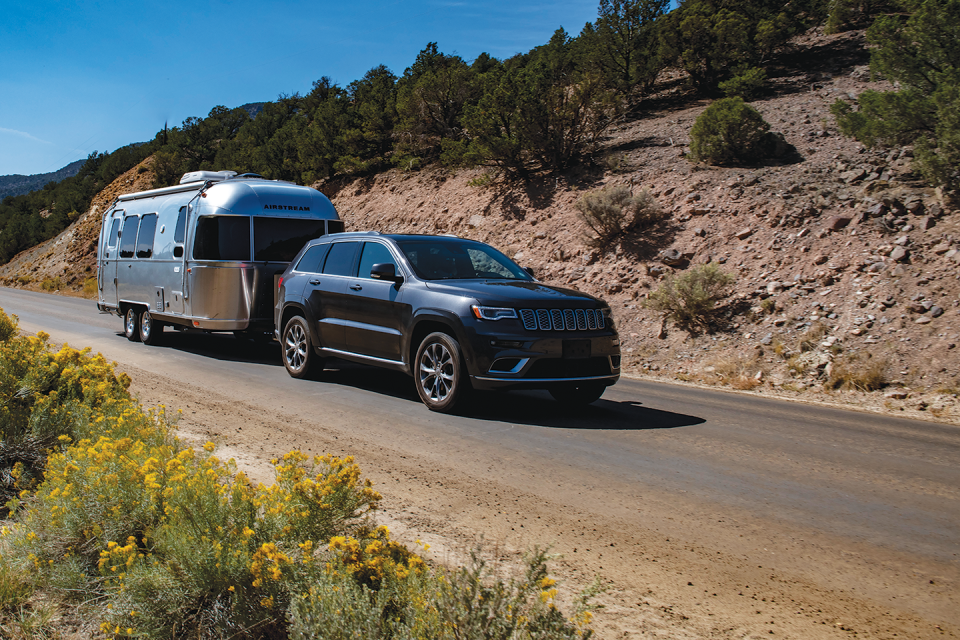
You Might Also Like

